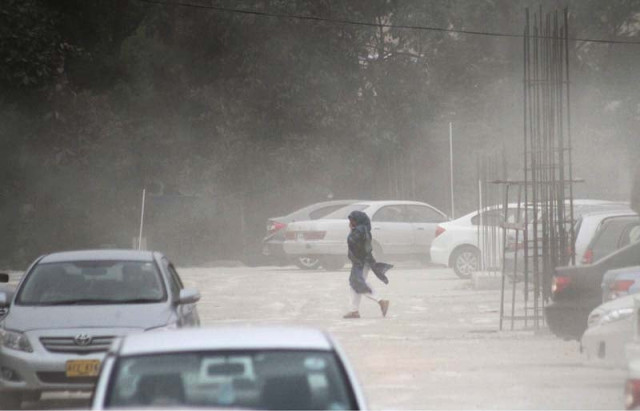Lahore:
Like many countries in the global south, Pakistan is also currently bearing the heavy brown of climate change. While heat waves are the most visible manifestation of extreme temperatures, it has unprecedented duration and intensity of the monsoon season this year raised alarm bells among meteorologists.
Climate experts are of the opinion that climate change has a serious impact on Pakistan, especially the province of Punjab, where precipitation has been exceptionally heavy and frequent. Compared to previous years, rainfall registers have surpassed normal levels in areas that have previously seen less intense weather since the rise in global temperatures has disturbed the MONSUN system in the region. In particular, rising temperatures in the Arabian Sea and the Indian Ocean have led to more moisture -loaded monsoon, resulting in heavier and more long -lasting rain.
PDMA spokesman Chaudhry Mazhar confirmed that the Monsun season started earlier than usual this year. “Typically, the Monsun season begins around July 15, but by 2025 it began already in June 25, considered a phase before the monsoon. This year’s early rain was unusually intense, and now it is expected that the monsoon will continue until at least in mid-September. Each Monsun-Downpour this year has been extremely strong, which breaks earlier, Warned Mazhar.
According to the latest figures obtained from the Meteorological Department and Punjab Disaster Management Authority (PDMA), the Chakwal District Recorded 423 mm rainfall in a single day between the night to 16 and 17 and 17 July; The highest in a place in Punjab this season. During the first half of July 2025, rainfall in Punjab exceeded normal levels by 73 percent. Reports from the National Disaster Management Authority (NDMA) and PDMA have indicated that in the fourth spell of the monsoon, not only Punjab, but the whole country received far more rainfall than the seasonal average. Overall, Punjab has seen an increase of 30 to 36 percent in precipitation this season compared to previous years.
Meteorologists have estimated that if normal monsoon rainfall for Punjab is between 800-900 mm, the total this year has already crossed 1,000 mm and could reach 1,200 mm at the end of the season. Despite warnings issued from the meteorological department and PDMA, local administrations were unprepared for the unprecedented rain and are now responding to it as if it were a natural disaster.
Dr. Saadia Khalid, an expert in climate change, said that monsoon rain has become more powerful and now follows unconventional routes. “This is why regions such as Punjab, which rarely so intense rain, are now experiencing a sharp increase in rainfall and intensity. In addition, urbanization, deforestation and changes in land use have worsened the effect of these rain.
Therefore, experts agree that if no immediate action is taken on carbon emissions, land management and devised a climate policy, extreme weather patterns – including heavy rain and flooding – will become the new normal in Punjab.



